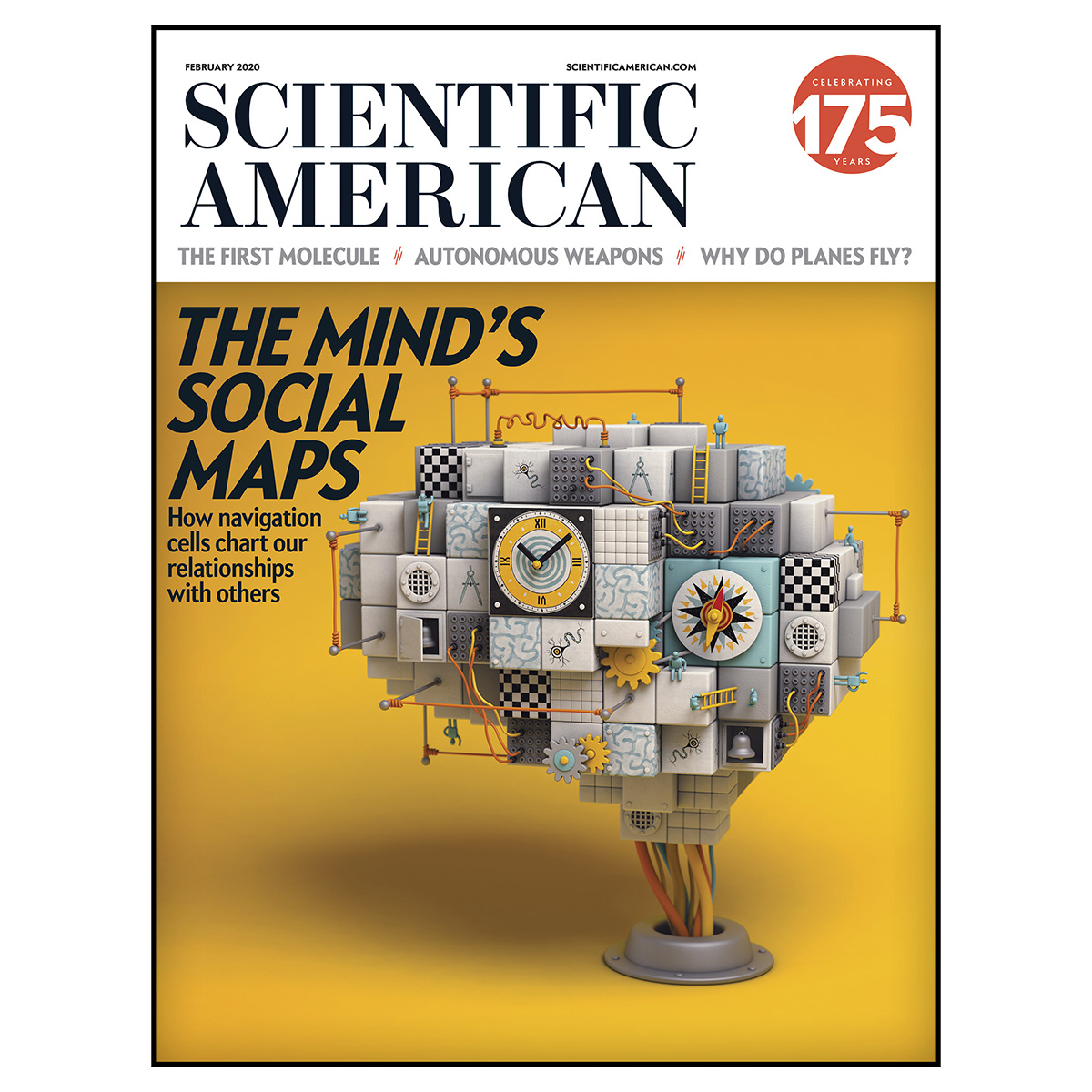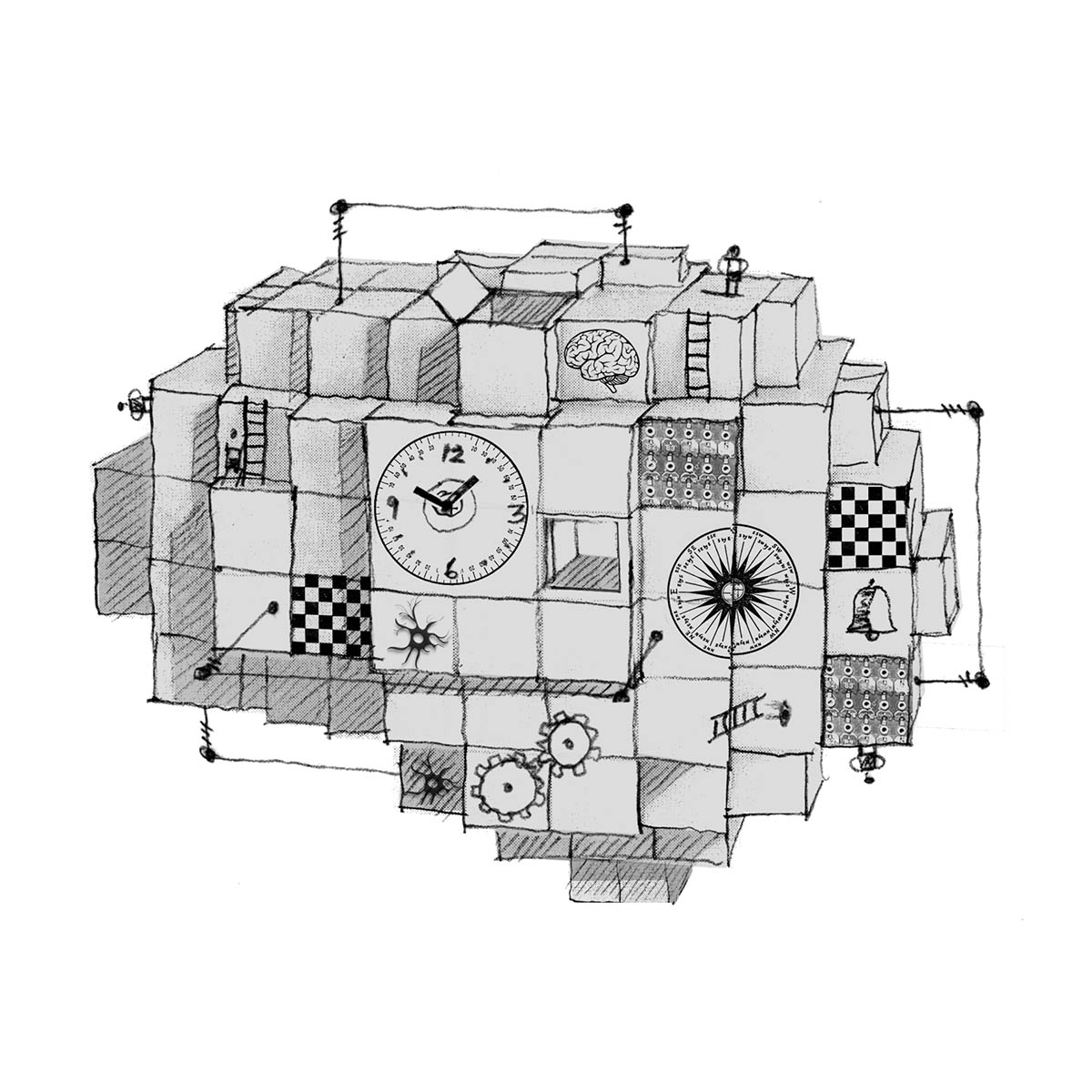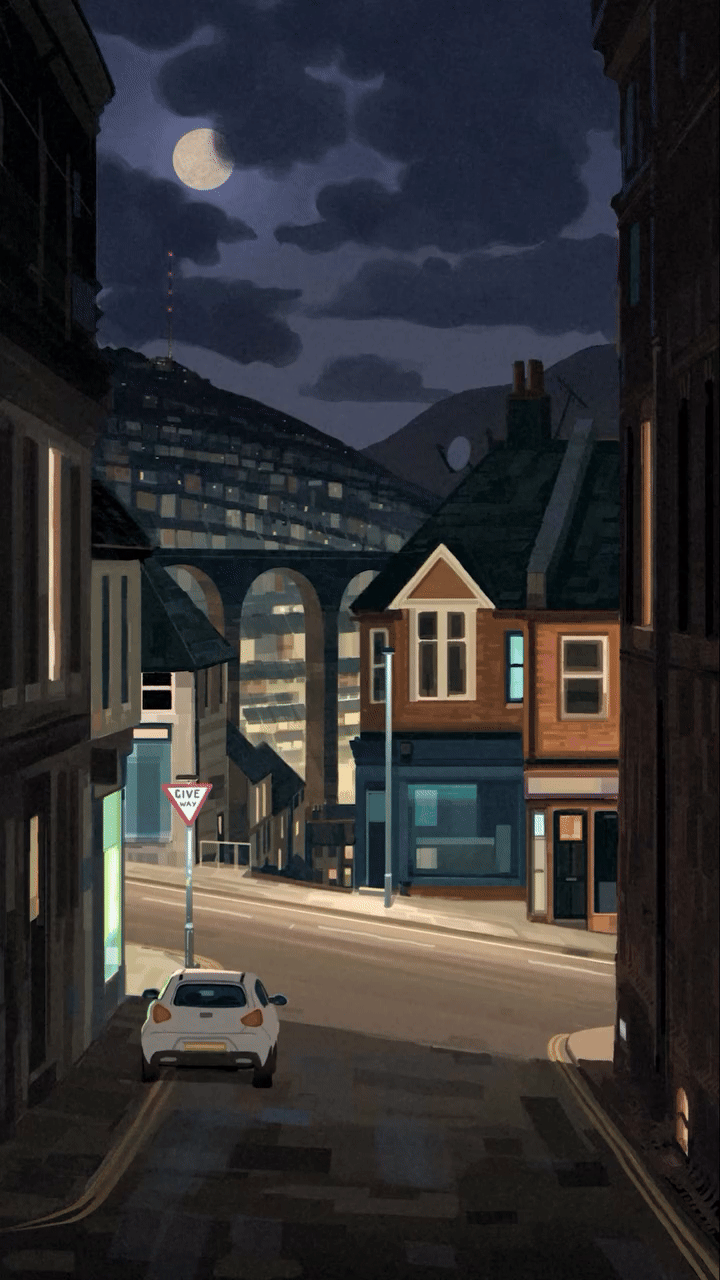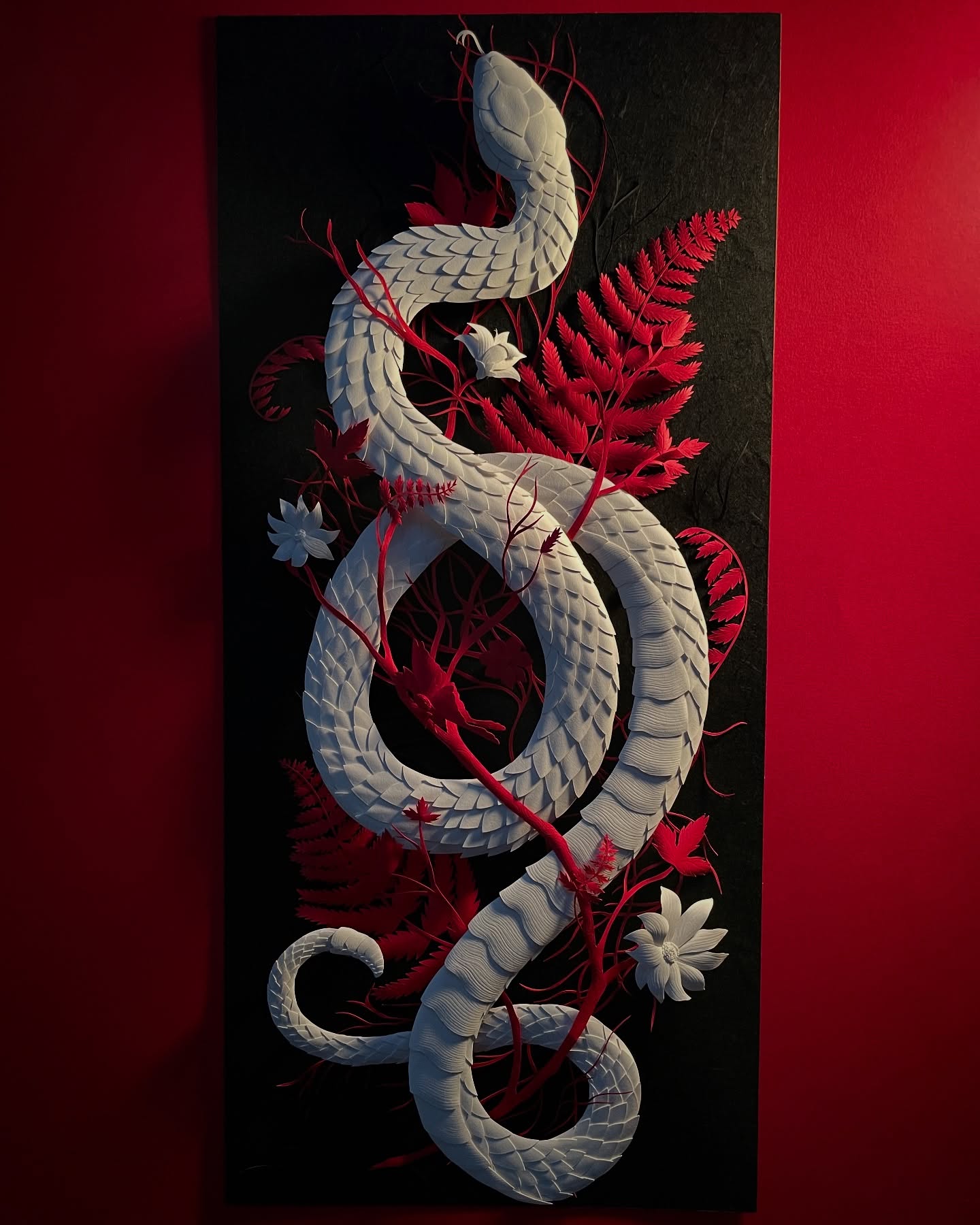When an assignment like this comes along, the first thing Richard Borge does is read the article. He absorbs the content in order to develop the best way to visually depict the story, which in this case happens to be very complicated. He then develops concept sketches, which he then fully develops with the use of Photoshop and an another 3D program.
The author begins the piece by stating, “There are no shortcuts in life – we are often told – but the brain appears remarkably wired to find them.” Richard’s depiction of the brain’s “neural wayfinding” provides the reader with added visual information and insight into our relationships with others, and at the same time makes a complex subject more approachable.









